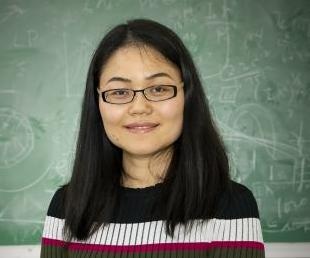Jun 3 2019
Gazing at the night sky, people substantially look at plasma, a soupy amalgam of ultra-hot atomic particles. Although a telescope is needed to analyze plasma in stars and different forms in outer space, researchers can recreate it in the lab for a closer examination.
 PPPL physicist Lan Gao. (Image credit: Elle Starkman)
PPPL physicist Lan Gao. (Image credit: Elle Starkman)
Currently, for the first time, a group of researchers headed by physicists Lan Gao of the U.S. Department of Energy’s (DOE) Princeton Plasma Physics Laboratory (PPPL) and Edison Liang of Rice University has developed a specific form of magnetized and coherent plasma jet that could offer deeper insights into the workings of considerably larger jets streaming from newborn stars and probably black holes—extremely massive stellar objects that trap light and warp both time and space.
“We are now creating stable, supersonic, and strongly magnetized plasma jets in a laboratory that might allow us to study astrophysical objects light years away,” stated astrophysicist Liang, co-author of the paper publishing the study outcomes in The Astrophysical Journal Letters.
The researchers used the OMEGA Laser Facility at the University of Rochester’s Laboratory for Laser Energetics (LLE) to create the jets. They aimed 20 of OMEGA’s individual laser beams on a plastic target through a ring-shaped area. A tiny puff of plasma was produced by each laser. With the expansion of the puffs, pressure was exerted on the ring’s inner region. Subsequently, this pressure squeezed out a plasma jet reaching more than 4 mm in length and produced a magnetic field with a strength of more than 100 T.
This is the first step in studying plasma jets in a laboratory. I’m excited because we not only created a jet. We also successfully used advanced diagnostics on OMEGA to confirm the jet’s formation and characterize its properties.
Lan Gao, Study Primary Author, Physicist, PPPL
The diagnostic tools were created in collaboration with teams from LLE and the Massachusetts Institute of Technology (MIT) and measured the jet’s temperature, density, length, the shape of the magnetic field around it, and how well it stayed together as it grew through space. The measurements enable researchers to establish how the laboratory phenomena compare to jets in outer space. They also offer a foundation that can be optimized by the researchers to detect the behavior of plasma under various conditions.
This is groundbreaking research because no other team has successfully launched a supersonic, narrowly beamed jet that carries such a strong magnetic field, extending to significant distances. This is the first time that scientists have demonstrated that the magnetic field does not just wrap around the jet, but also extends parallel to the jet’s axis.
Edison Liang, Study Co-Author, Rice University
The scientists anticipate to widen their study with larger laser facilities and analyze other types of phenomena. “The next step involves seeing whether an external magnetic field could make the jet longer and more collimated,” stated Gao.
“We would also like to replicate the experiment using the National Ignition Facility at Lawrence Livermore National Laboratory, which has 192 laser beams, half of which could be used to create our plasma ring. It would have a larger radius and thus produce a longer jet than that produced using OMEGA. This process would help us figure out under which conditions the plasma jet is strongest.”
The group included researchers from PPPL, Rice University, LLE, MIT, and the University of Chicago. The study was financially supported by the DOE’s National Nuclear Security Administration, the National Science Foundation, and Los Alamos National Laboratory. Computer simulations were carried out on the Extreme Science and Engineering Discovery Environment (XSEDE), a collaborative partnership of 19 institutions, and the Argonne Leadership Computing Facility, a DOE Office of Science user facility.